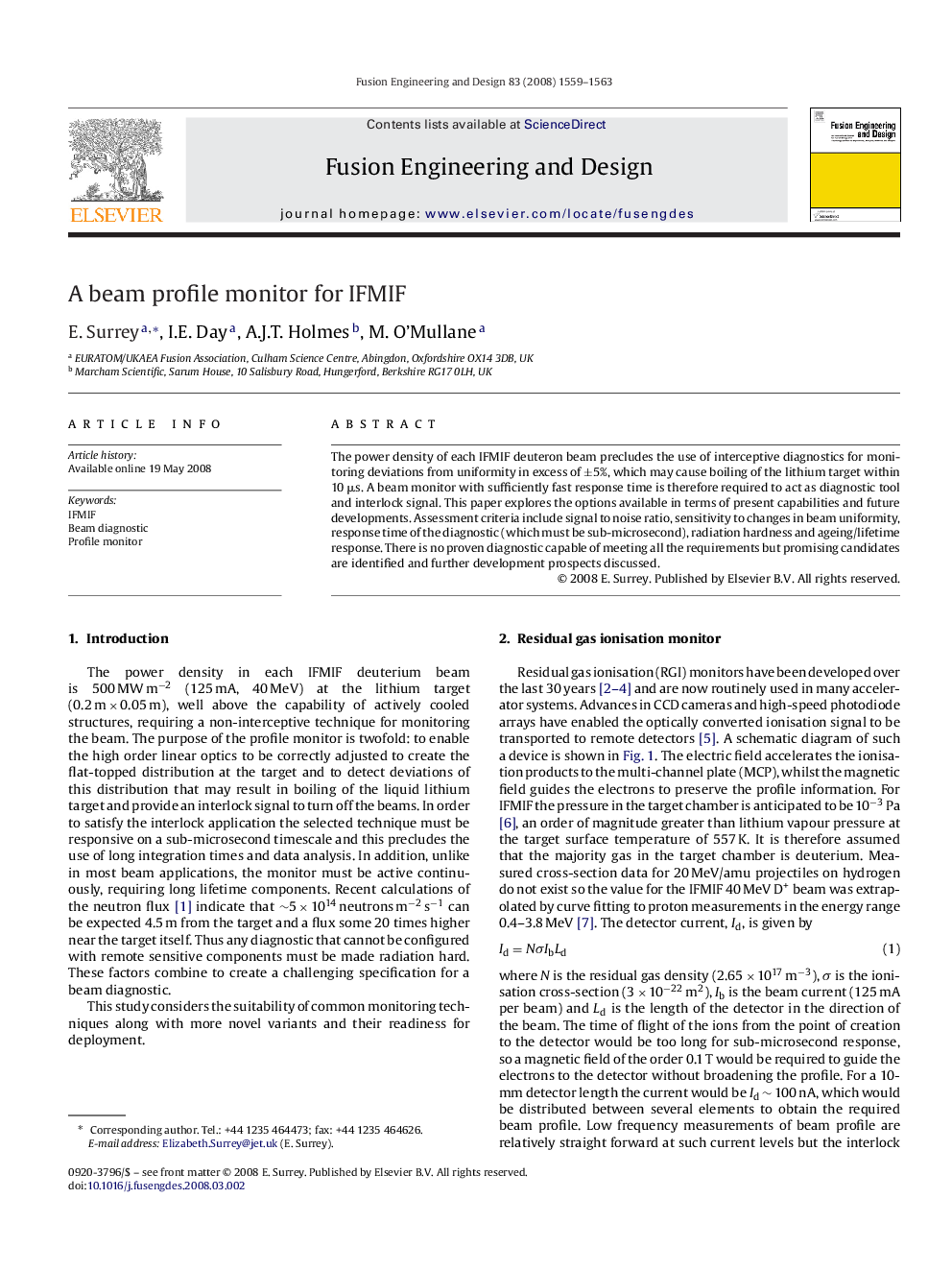| Article ID | Journal | Published Year | Pages | File Type |
|---|---|---|---|---|
| 272758 | Fusion Engineering and Design | 2008 | 5 Pages |
The power density of each IFMIF deuteron beam precludes the use of interceptive diagnostics for monitoring deviations from uniformity in excess of ±5%, which may cause boiling of the lithium target within 10 μs. A beam monitor with sufficiently fast response time is therefore required to act as diagnostic tool and interlock signal. This paper explores the options available in terms of present capabilities and future developments. Assessment criteria include signal to noise ratio, sensitivity to changes in beam uniformity, response time of the diagnostic (which must be sub-microsecond), radiation hardness and ageing/lifetime response. There is no proven diagnostic capable of meeting all the requirements but promising candidates are identified and further development prospects discussed.
